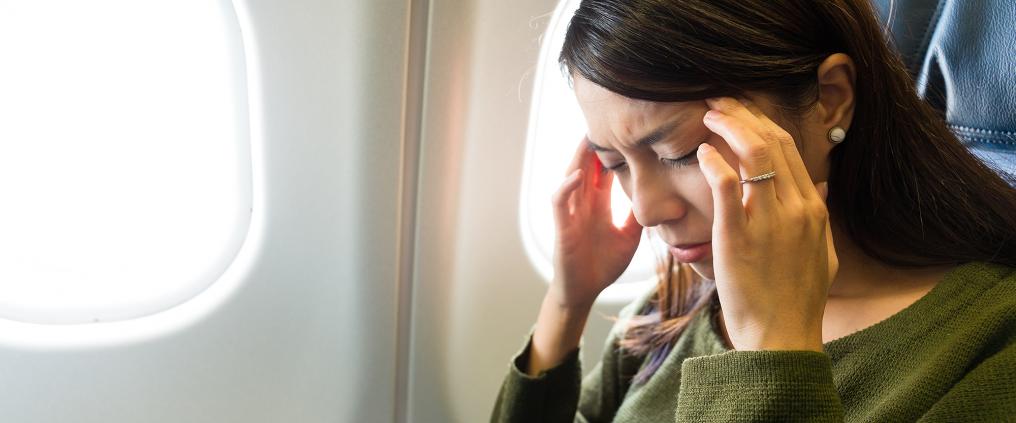Most plane passengers are familiar with the feeling of clogged or popping ears, particularly during takeoff and landing. This is perfectly normal, and a sign of rapid changes in outside air pressure that the middle ear, also filled with air, has not yet had time to adapt to. Yawning, chewing and the so-called Toynbee maneuver — closing your mouth and nose before swallowing — are easy ways to equalize the pressure inside your ear.
“An obstructed middle ear is unable to adapt to changing cabin pressure."
The problems begin when you’re flying with an ear infection that causes swelling in the middle ear. “An obstructed middle ear is unable to adapt to changing cabin pressure,” explains Tanja Vuorela, a Specialist in Occupational Health and General Practice at Terveystalo. “This causes the ear to become clogged more easily and stay clogged for longer.”
More unpleasantly, the imbalance in air pressure can suck the eardrum inwards, causing considerable pain. This is not only disagreeable but also dangerous. “Sudden, sharp pain is the sign of an eardrum ruptured under pressure,” Vuorela says. A perforated eardrum takes up to a few weeks to heal, and can require surgery. “The worst-case scenario of flying with an ear infection is lasting damage to the inner ear, which will affect on your hearing. This is quite rare, though.”
Vuorela doesn’t recommend flying with a cold or an ear infection.
Vuorela doesn’t recommend flying with a cold or an ear infection, particularly when the ears already feel painful or fester. If there is little pain and you simply must fly, a nasal spray containing xylometazoline, typically found in allergy and sinusitis medication, can provide some relief by decongesting the ears. “Another option is to ask your doctor for a prescription of tablets containing pseudoephedrine, which is also decongestant,” Vuorela says. “If the patient is a child, you can give anasthetizing eardrops a go.”
Sucking on a lollipop or lozenge and chewing can also help. But often it’s best to simply delay your flight until your ears are in full working order again.
